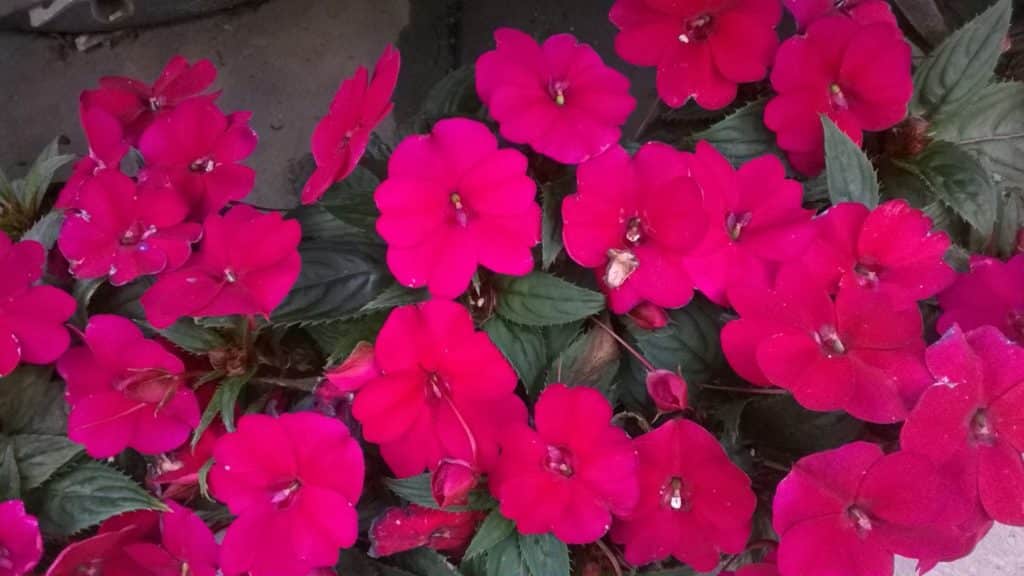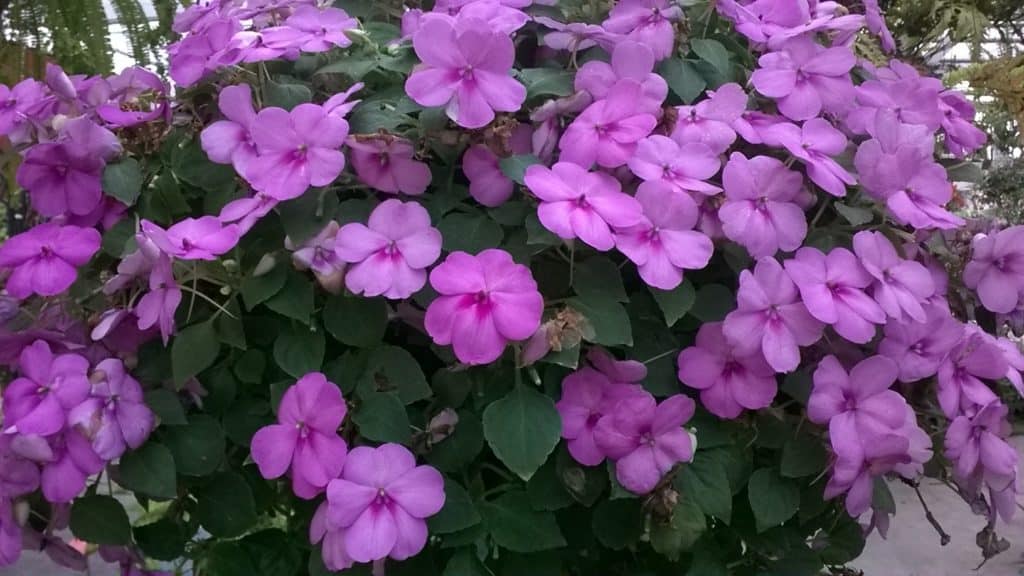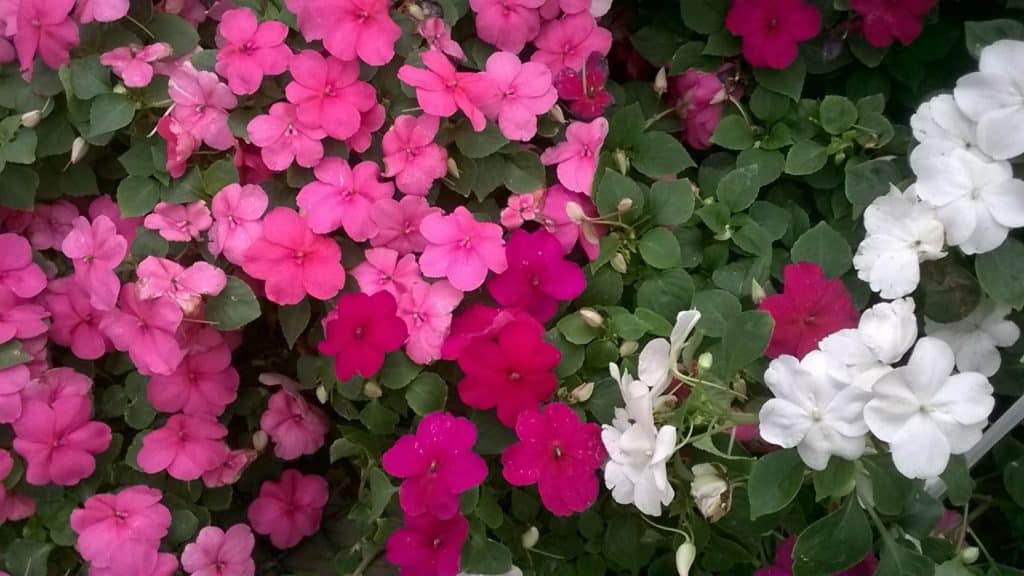One of the most popular bedding plants of all time, impatiens (I. wallerana) makes a cheery addition to the shade garden. These colorful flowers light up dark corners and readily grow in garden beds, hanging baskets and containers.
Find impatiens in single and double-flower forms. The single flowers lay flat and resemble pinwheels, while the double flowers look just like miniature roses. Whatever type you plant, they produce a mass of vibrant color.
(Julie Bawden-Davis)
Impatiens come in pink, white, red, orange, lavender and coral. There are even variegated bicolor varieties. The plant tends to be low-growing, generally not reaching higher than 8 inches.
To have luck growing impatiens in your spring shade garden, keep the following cultivation tips in mind.
(Julie Bawden-Davis)
Grow in shade or part shade. Impatiens aren’t meant to grow out in the blazing sun. It’s generally best to grow them in a shade or part shade location. Good places to plant these flowers include under trees, house overhangs or deck covers where they receive dappled sunlight or in areas that get bright, indirect light. They can also tolerate some morning sun. If you live in a coastal area, they can be grown anywhere in the yard.
Plant in the ground or containers. For in-ground planting, place the plants in rich, well-draining soil. If the soil is clay, amend with compost by 40 to 50 percent before planting. For containerized impatiens use a well-draining, organic potting soil that retains moisture.
Keep well watered. Impatiens grow poorly if allowed to dry out. Water when the top inch of soil has dried out. The soil should remain moist, but not soggy.
Fertilize regularly. Apply an organic fertilizer designed for flowering plants every two to four weeks.
Check for pests. Impatiens may get attacked by the tarnished plant bug, which will lead to small and deformed flowers. Treat with neem oil.

(Julie Bawden-Davis)
Pinch regularly. Impatiens tend to get leggy, so keep them in check by pruning back regularly. This will cause the plants to become bushier and flower more.
Cut impatiens back. If you live in a climate that doesn’t freeze, cut impatiens back to 2 inches in December. They will come back full and bloom well come spring.
Julie Bawden-Davis is a garden writer and master gardener, who since 1985 has written for publications such as Organic Gardening, The American Gardener, Wildflower, Better Homes and Gardens and The Los Angeles Times. She is the author of 10 books, including Reader’s Digest Flower Gardening, Fairy Gardening, The Strawberry Story Series, and Indoor Gardening the Organic Way, and is the founder of HealthyHouseplants.com 